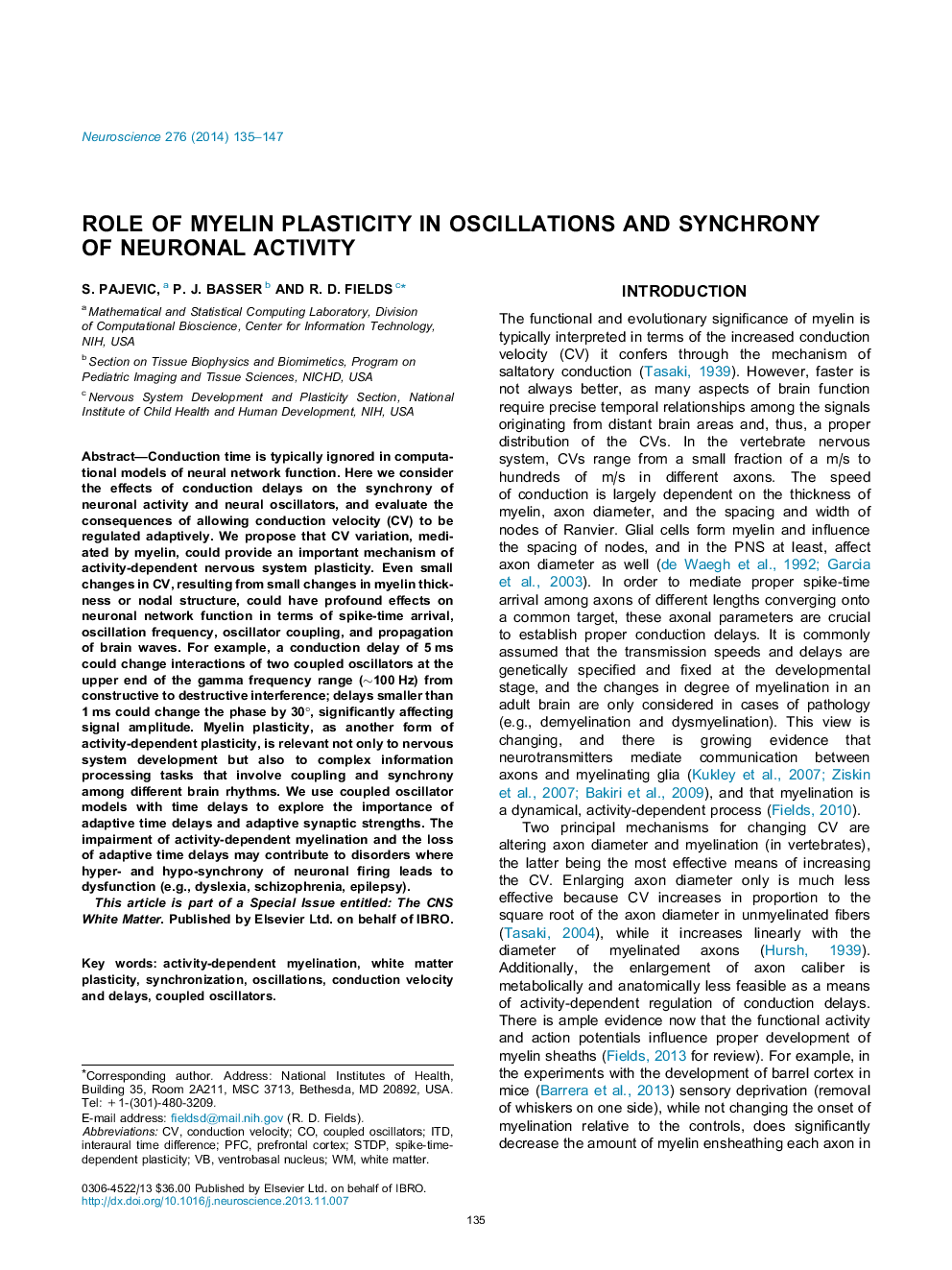| کد مقاله | کد نشریه | سال انتشار | مقاله انگلیسی | نسخه تمام متن |
|---|---|---|---|---|
| 6273803 | 1614800 | 2014 | 13 صفحه PDF | دانلود رایگان |
- Conduction delays in neural synchrony and oscillations are considered.
- Small delays have significant effects.
- Regulating conduction velocity through activity-dependent changes in myelin could provide a novel form of nervous system plasticity.
Conduction time is typically ignored in computational models of neural network function. Here we consider the effects of conduction delays on the synchrony of neuronal activity and neural oscillators, and evaluate the consequences of allowing conduction velocity (CV) to be regulated adaptively. We propose that CV variation, mediated by myelin, could provide an important mechanism of activity-dependent nervous system plasticity. Even small changes in CV, resulting from small changes in myelin thickness or nodal structure, could have profound effects on neuronal network function in terms of spike-time arrival, oscillation frequency, oscillator coupling, and propagation of brain waves. For example, a conduction delay of 5 ms could change interactions of two coupled oscillators at the upper end of the gamma frequency range (â¼100 Hz) from constructive to destructive interference; delays smaller than 1 ms could change the phase by 30°, significantly affecting signal amplitude. Myelin plasticity, as another form of activity-dependent plasticity, is relevant not only to nervous system development but also to complex information processing tasks that involve coupling and synchrony among different brain rhythms. We use coupled oscillator models with time delays to explore the importance of adaptive time delays and adaptive synaptic strengths. The impairment of activity-dependent myelination and the loss of adaptive time delays may contribute to disorders where hyper- and hypo-synchrony of neuronal firing leads to dysfunction (e.g., dyslexia, schizophrenia, epilepsy).
Journal: Neuroscience - Volume 276, 12 September 2014, Pages 135-147
